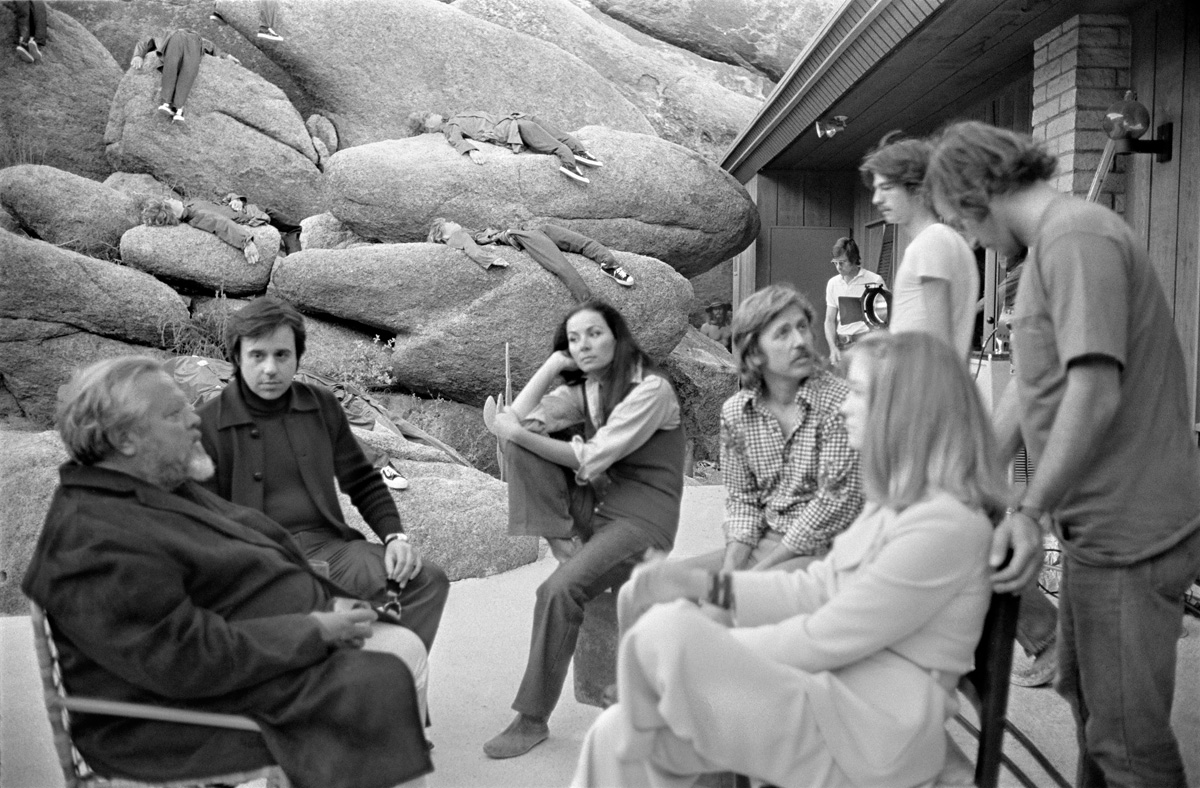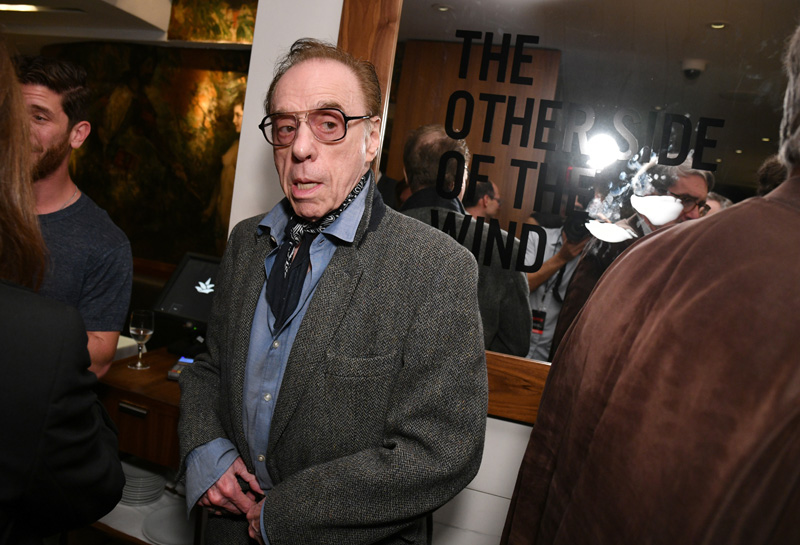Netflix provided ComingSoon.net the honor of chatting 1:1 with legendary director and film scholar Peter Bogdanovich (Paper Moon, The Last Picture Show) for The Other Side of the Wind, the long-awaited final film from master director Orson Welles. Bogdanovich was a longtime friend of Welles who wrote the career-spanning interview book “This is Orson Welles” which the Citizen Kane filmmaker considered his autobiography. Bogdanovich played a lead role in The Other Side of the Wind, and spent the last 33 years since his Welles’ death trying to gather the resources to finish it for him. Check out the fascinating interview below!
RELATED: Orson Welles’ The Other Side of the Wind Trailer and Poster!
In 1970, legendary director Orson Welles (Citizen Kane) began filming what would ultimately be his final cinematic opus with a cast of Hollywood luminaries including John Huston, Peter Bogdanovich, Susan Strasberg and Welles’s partner during his later years, Oja Kodar. Beset by financial issues, the production ultimately stretched years and gained notoriety, never to be completed or released. More than a thousand reels of film negatives languished in a Paris vault until March of 2017, when producers Frank Marshall (who served as Welles’s production manager during his initial shooting) and Filip Jan Rymsza spearheaded efforts to have the film completed after over 40 years.
Featuring a new score by Oscar-winning composer Michel Legrand and reassembled by a technical team including Oscar-winning editor Bob Murawski, The Other Side of the Wind is Orson Welles’s vision fulfilled. It tells the story of grizzled director J.J. “Jake” Hannaford (Huston), who returns to Los Angeles after years in self-exile in Europe with plans to complete work on his own innovative comeback movie. Both a satire of the classic studio system and the New Hollywood that was shaking things up, Welles’s last artistic testament is a fascinating time capsule of a now-distant era in moviemaking as well as the long-awaited “new” work from an indisputable master.
RELATED: They’ll Love Me When I’m Dead Trailer Celebrates Orson Welles
The film was directed by Orson Welles, and produced by Frank Marshall (Indiana Jones series, Jurassic World: Fallen Kingdom) and Filip Jan Rymsza (Valley of the Gods).
The Other Side of the Wind is now streaming on Netflix.

ComingSoon.net: Orson famously passed the torch to you, saying that he wanted you to complete the film after he passed. With all the legal wrangling over the years that prevented that from happening, how much did that responsibility weigh on you in the interim?
Peter Bogdanovich: Well, a lot because from 1985, when he died, until Netflix stepped into the picture, we didn’t have a deal. I’ll give you an example. We had three different regimes at Showtime. Each said they’d do it, but we couldn’t get the people who owned the rights or said they owned the rights or didn’t own the rights, but claim they did… Couldn’t get the rights holders to agree monetarily, and some of them were fake. One group said they owned the rights, and they had some signature by the Shah of Iran’s brother-in-law. A lot of shit went on for years. When Netflix stepped in, that was what got it done. They’ve been terrific and just wonderful. We even went over budget and they didn’t complain about it.
CS: Well, that’s good. They’ve got a little cash. They’ve got a little coin.
Bogdanovich: They’ve got a little cash, yeah.
CS: Watching the movie it’s like a tapestry of faces from that time, of old Hollywood faces. I even saw Cybill for a second.
Bogdanovich: Yeah, she’s in it.
CS: Of all the scenes in the film, which one packs the most emotional charge for you in terms both memories of the time and of Orson?
Bogdanovich: I think the scene in the car, when I say “our revels now are ended,” that’s a powerful scene. But I didn’t play it with John. John wasn’t there. I played it with Orson. Orson was off-camera, and his only direction to me was, “It’s us.”
CS: Wow. In the movie, the character of Jake is described and portrayed as the Ernest Hemingway of film directors, which is much closer to Huston than it is of Welles.
Bogdanovich: Yes, exactly. That’s why he gave the part to John. He wanted to play it himself, but he felt that John was more right for it.
CS: Jake also has a lot of the same financing issues and artistic inclinations that Welles had. Can you talk a little bit about how much of Jake is John, how much is Orson, what aspects are sort of pure fabrication?
Bogdanovich: Well, I remember we had had dinner in Paris one night somewhere at some out of the way restaurant -which I never could find again- where we had the greatest steak I’ve ever had. We were standing on the sidewalk and Orson was saying, “Why should I give him that part? It’s a great part. I should play it myself. But he’s so RIGHT for it, damn it!” He was really torn, and for quite a while he didn’t cast John. He was sort of doing it himself off-camera, and then he ultimately decided John was more right for it than he was, because John was macho, a little bit, and looked the part more than Orson. John was great and they got along famously, and John gives a demonic, brilliant performance, just extraordinary. He felt unleashed, but Orson did give you that feeling, you could not do anything wrong. He might not like it exactly, or might want it a little different, but it wasn’t wrong. He created an atmosphere of complete freedom.
CS: In your interview book with Orson there’s a part where he was bemoaning all of the acting parts that he had to do for money, but at the same time, he was proud of his filmography as a director. He was like, “The movies that I did, those stand.”
Bogdanovich: He said he kept his virginity as a director.
CS: Yes! How do you think he stayed creatively resilient, given how difficult it was for him to complete projects at this point in his career?
Bogdanovich: Well, he just never gave up, as simple as that. I think he was discouraged sometimes and got depressed, but he just plowed on. He was amazing, that way.

CS: Was the friendship between you and Orson ever as obsessed over and analyzed by the press as is portrayed in the film?
Bogdanovich: No.
CS: That is an exaggeration?
Bogdanovich: Yeah, yeah. We had a bit of a falling out at one point because—it’s a long story— but it had to do with “Saint Jack.” He had wanted to do it. It’s a long story, but we got the rights from Playboy, and in doing that we had to give up a lawsuit that Cybill was having with Playboy, and she did it for Orson to get the rights to the book. Then Orson sort of just stalled around for a year, and he said he wanted Jack Nicholson, so I got him Jack Nicholson and then he said he didn’t want Jack Nicholson. He wanted Dean Martin. Everybody got upset, and I thought he behaved badly because Cybill had done him a favor by giving up a lawsuit so that he could get the book. Finally, they said to me, “You direct it.” And that didn’t make him too happy.
CS: Right. I could imagine. Well, I do like “Saint Jack,” I think that’s one of your standout pictures.
Bogdanovich: Yes, I think it’s one of my best pictures, yeah.
CS: Were you involved in the “Other Side” shoot throughout the years-long process, or were you only there for a certain amount of time?
Bogdanovich: I was there for a certain amount of time, only when I was working as an actor. I wasn’t there except when I was working. I shot my whole part in about two weeks.
CS: That’s amazing because the part is spread so much throughout the whole film.
Bogdanovich: I can’t remember, to be honest with you, how long it was. It didn’t seem that long. We shot some of it in my house that I had at that time in Bel Air. Orson was my houseguest off and on for three years, and he shot a lot of the picture in my house, while I was shooting “Daisy Miller” in Europe. But we ended up all right. We had a very intimate conversation, the last one we had, about a week and a half before he died. I said to him, “Jesus, Orson. I feel like I made so many mistakes.” And he said, “Well, it does seem to be impossible to go through life without making a great many of them.” And he said, “Oja is calling me. I’ve got to go.” And that was the last conversation.
CS: Wow. And of course, Frank Marshall had a big part in taking this to the finish line. He worked as a producer on several of your pictures in the 70’s, and then…
Bogdanovich: No, he started with me, his first picture was my picture. He wasn’t a producer on that, he was a general assistant, and functioned as a kind of an associate producer. Eventually, he did become a producer, and eventually became a director. But we did seven or eight pictures together, and he did another few. We’ve done about 11 movies.
CS: Yeah, including “Noises Off” later.
Bogdanovich: Including “Noises Off,” yeah, and the revised version of the John Ford documentary, which I didn’t like the first one. But the new one is the one that’s not available on DVD. Frank helped to get that done.
CS: And how has your relationship with him sort of changed and evolved over the years?
Bogdanovich: Well, he owns Hollywood now. He was just a student on “Other Side of the Wind.” He had just graduated from UCLA Film School.
CS: And now you guys were able to sort of take this thing home together.
Bogdanovich: It’s amazing that we did it, but we did. Frank was very instrumental in getting it done.

CS: Because the movie was Orson commenting on the new Hollywood era of the time, I feel like if it had come out at the time it might’ve been seen as a reaction to the experimentalism going on. If it had come out in the 80’s, it might have been seen as passé. Today it seems super prescient, especially given media oversaturation and the rise of meta narrative. Can you talk about how you think the film would’ve been perceived then as opposed to now?
Bogdanovich: Well, I don’t know. It seems to me that if it had come out in the 70’s or the end of the 70’s it would’ve been considered very unusual and very fresh and modern and avant-garde and surprising, and it still is all those things. It’s still ahead of its time.
CS: Oh yeah. Just the staccato editing techniques, that’s something that’s become normalized now.
Bogdanovich: Yeah, but the whole idea of found footage, people have done that. I don’t think anybody ever did it quite the way Orson did.
CS: If you did the movie now, it’d be a bunch of people at a party pointing camera phones at everybody.
Bogdanovich: Yeah, exactly. Camera phones.
CS: Welles had a lot of little pet projects that he would shoot piecemeal throughout the years, and he carried around that suitcase of equipment with him all the time. There’s movies like “The Deep” and “Don Quixote” that never got done. In those cases, both the lead actors died. Do you think there’s any chance movies like that could get the same love that “Other Side” got?
Bogdanovich: I don’t think they’re finished. The thing that’s good about this picture is that he had shot everything. All we had to add were some trick shots of the dummies getting hit and things like that. Mainly that, and the drive-in screen had to have a film projected on it. But otherwise, he shot everything, and that isn’t the case with some of the other films. “Don Quixote” had never been finished.
CS: Even though Jesús Franco kind of botched it.
Bogdanovich: Terrible, yeah, it was a terrible mess. And then, “The Deep”, he showed me quite a bit of “The Deep” and it was quite good, but I think he thought it was just another thriller. He didn’t want to come out with just another thriller. I don’t know if that one, he had finished, because Larry Harvey, I don’t think he finished the movie.
CS: I don’t know if this is true or not, but I believe in ’85 it was announced that Welles was going to direct an episode of “Amazing Stories” with Burt Reynolds. Is that a true thing?
Bogdanovich: I remember it vaguely, but it didn’t happen. I remember that vaguely, yeah.

CS: Orson went to great lengths to fund his movies. On this one in particular he relied a lot on volunteers and young people. I already know the story about Welles editing the porno film for his cinematographer, but do you have any other sort of crazy stories about how he was able to pull the financing together?
Bogdanovich: I remember sitting with him at lunch on several occasions where he was trying to charm some money people. I got so depressed by that. After we finished the meal, I said, “This is very dirty, Orson. You even picked up the tab.” And I said, “This is very depressing.” And he was surprised at my reaction. He said, “I guess I’ve been doing this so long it doesn’t bother me anymore.” And I go, “Well, that’s sad.” But he was very resilient, and he just bounced back. I saw him in some depression, but basically he bounced back very quickly. He was kept alive by shooting. He loved shooting. He really loved that process.
CS: To the point where he wasn’t going to wait for somebody to give him permission to do it.
Bogdanovich: No, he wasn’t. He just went ahead and did it. Which is the way he made films since from the time he left Hollywood in ’47 as an actor, he did “Macbeth.” The way he did “Othello” was shooting all over the place, shooting when he had the actors, getting the money here, there and everywhere. The picture was totally dismissed in America and got the grand prize at Cannes. This country is so dumb about Orson.
CS: I always remember the great story -you could probably tell me if it’s apocryphal or not- that Charlton Heston called Orson to ask him if he wanted to play Falstaff in a movie, and Orson had already done “Chimes at Midnight” years earlier.
Bogdanovich: I didn’t hear that story. It’s probably true. I remember Orson watched Chuck on a TV show and I was with him. Heston said he had done this minor masterpiece with Orson for “A Touch of Evil.” Orson yelled, “Why did he have to say minor?”
CS: You do several killer impressions in the movie, including Jimmy Stewart. How much of that was improv and how much was it Orson sort of tailoring scenes to your gifts?
Bogdanovich: He’d say, “Do that part like Jimmy,” or “Do that like Cagney,” or something. Sometimes I just jumped into it, because Orson liked it when I did impressions. When we were doing the book, which took a long time, I’d say, “Come on, let’s do some taping.” He’d say, “Oh no, not now.” And I’d say, [in Jimmy Stewart warble] “Oh come on, Orson. Let’s do some work on the book.” “Oh, all right, Jimmy.” He liked it when I did impressions. “Come on, Orson, let’s do…” you know, whatever I did, he loved the impressions. I could get him to do anything with Jimmy Stewart.
(Photo Credit: Getty Images)
The Other Side of the Wind
-
They'll Love Me When I'm Dead

-
The Other Side of the Wind

-
The Other Side of the Wind
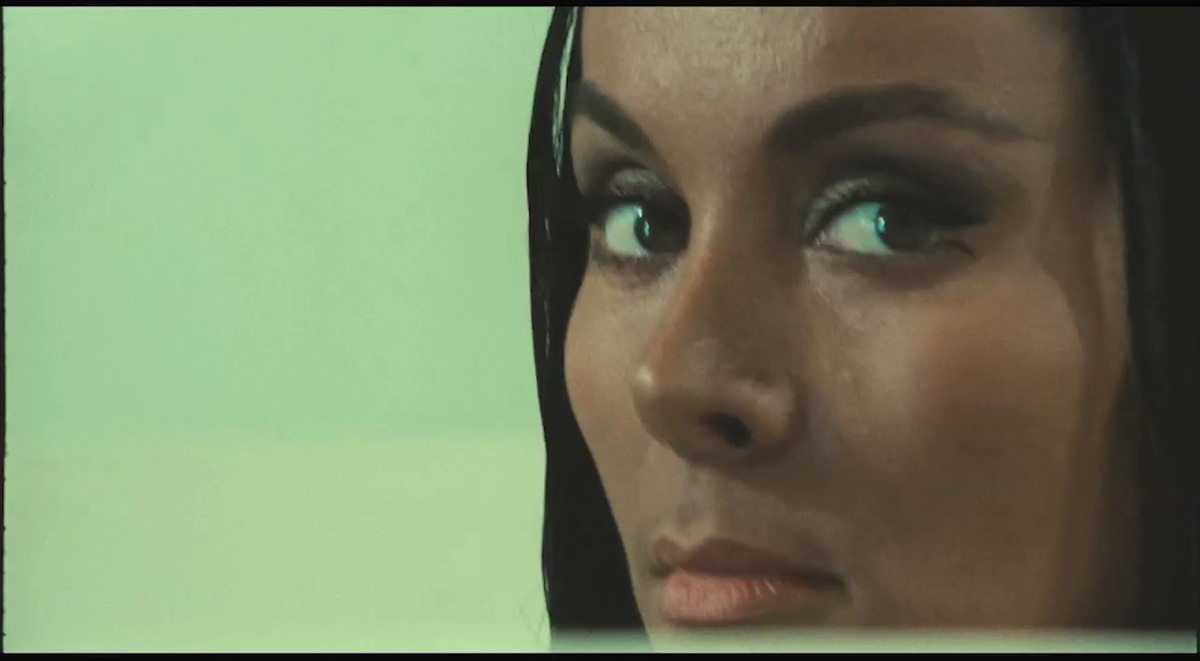
-
The Other Side of the Wind
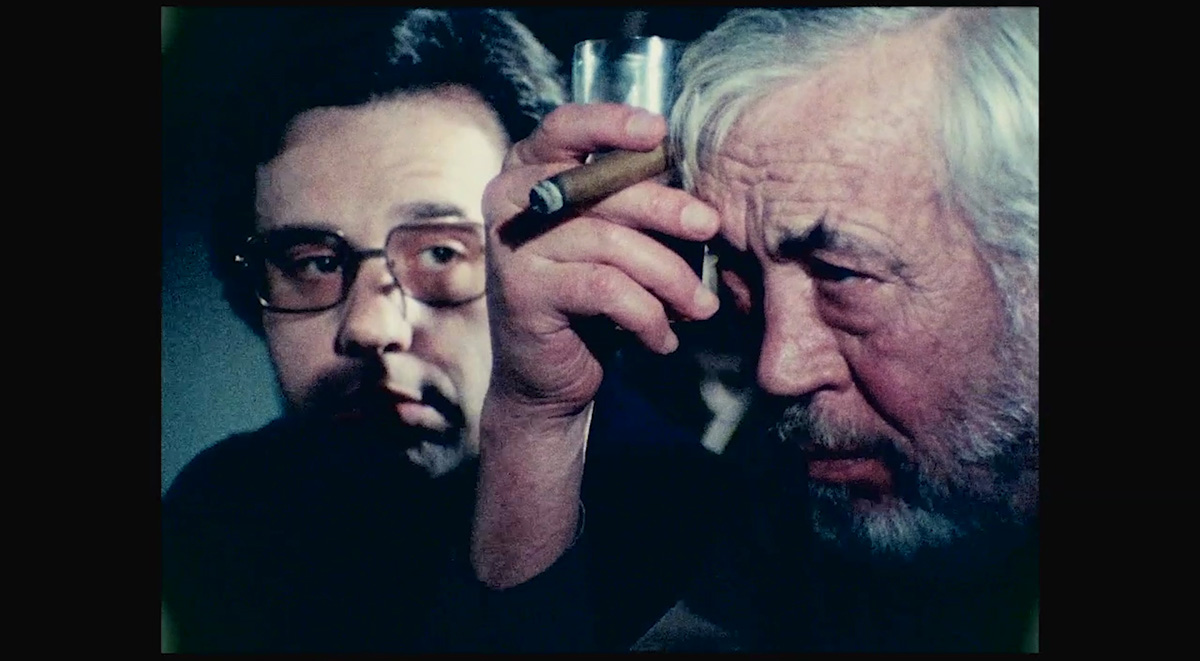
-
The Other Side of the Wind
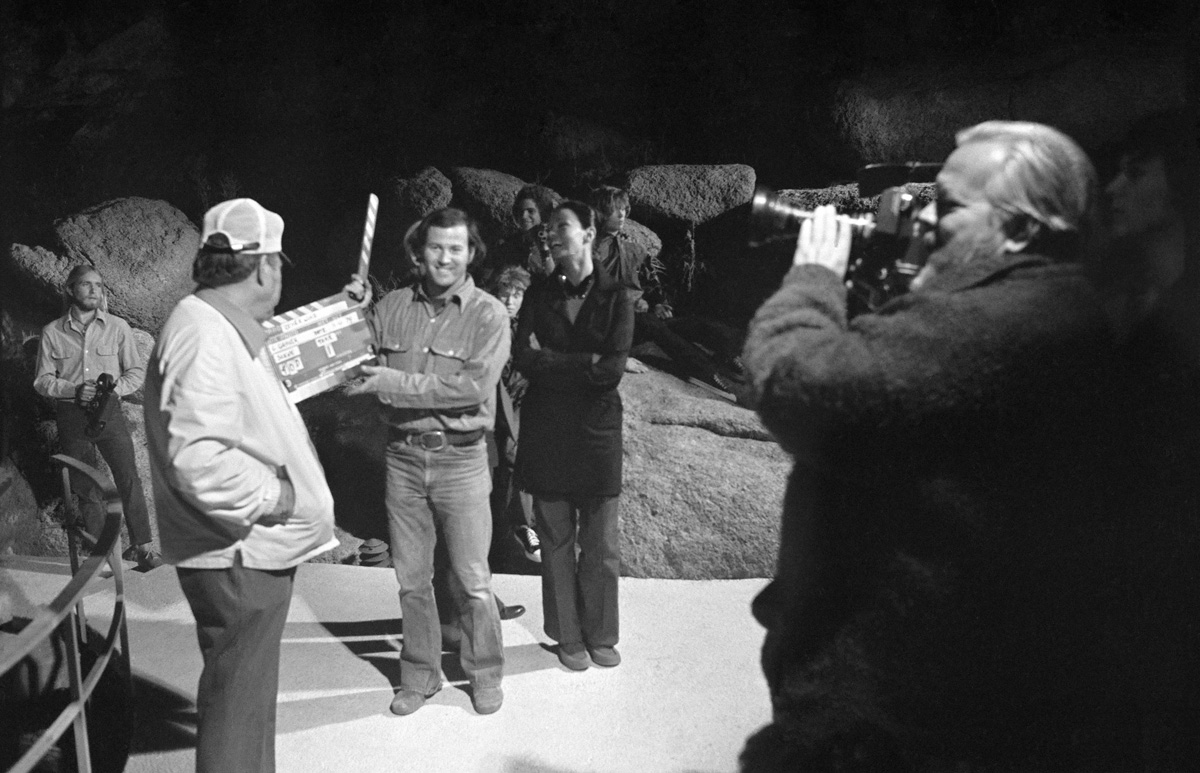
-
The Other Side Of The Wind
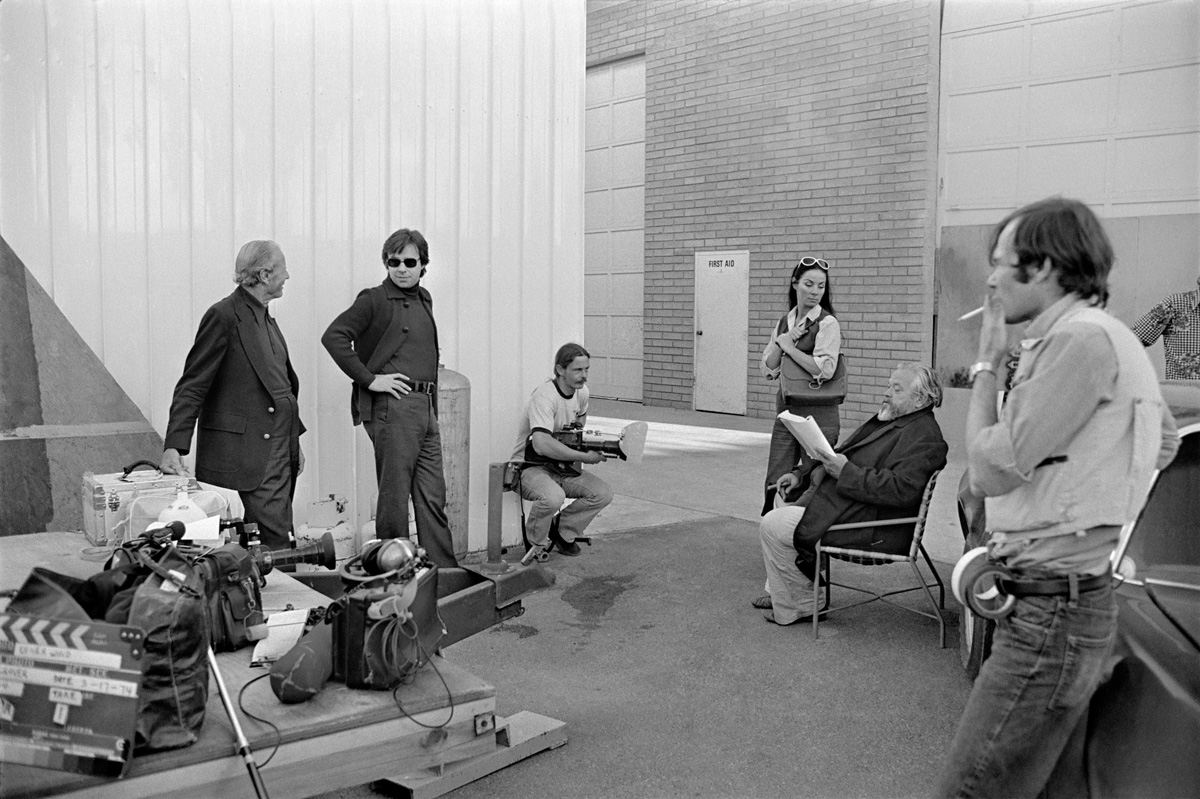
-
The Other Side Of The Wind
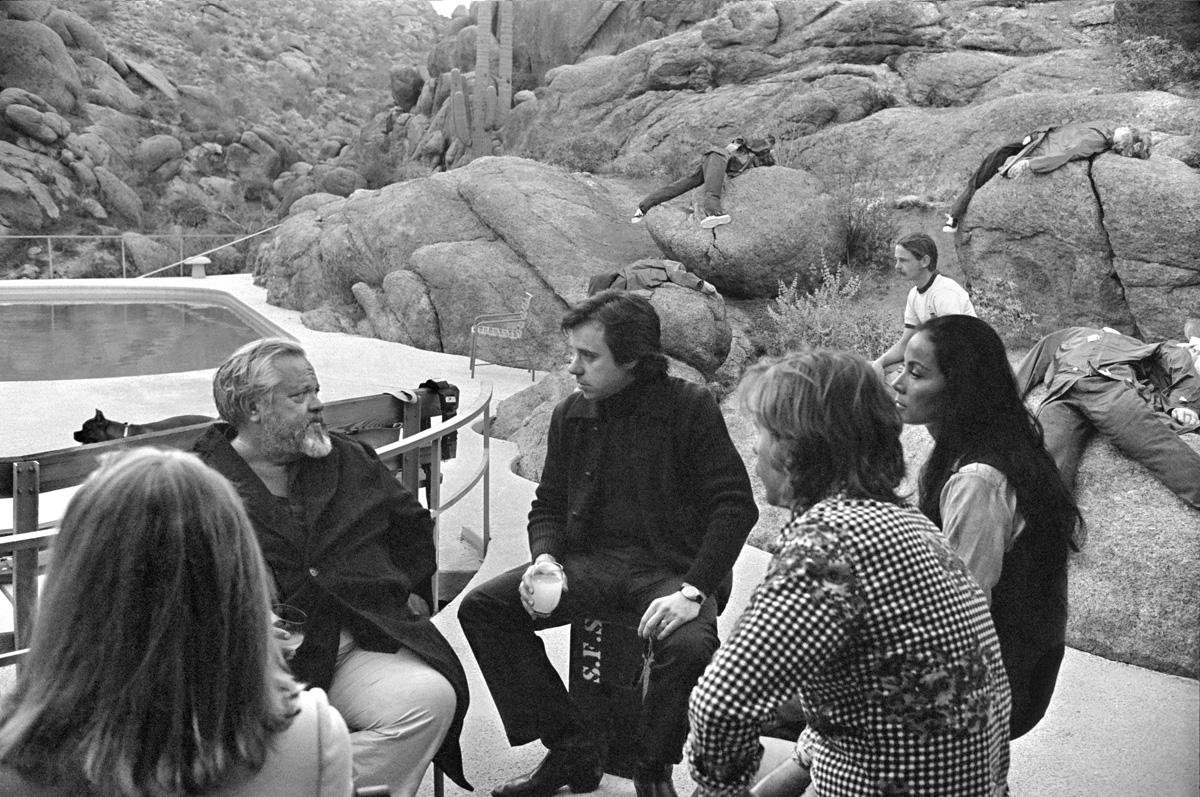
-
The Other Side Of The Wind
